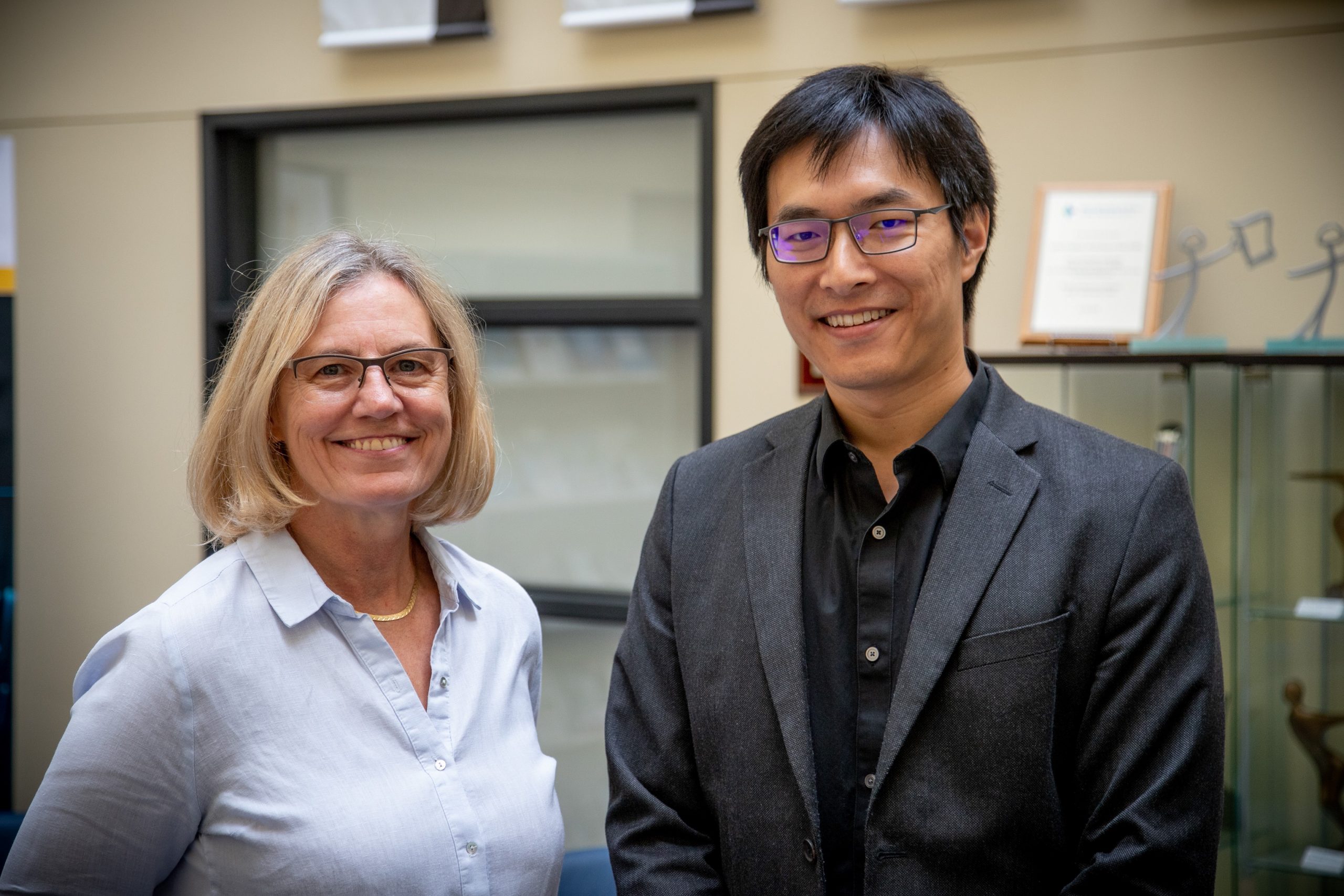In order to meet the relentless drive for better and faster IT infrastructure, today’s semiconductor devices are an amalgam of exotic materials, many of them expensive to obtain and difficult to process. But is it possible to achieve the performance of these unusual compounds with a more commonplace material?
Two Université Laval professors have done just that. Pooling their expertise in systems and devices, Drs. Leslie Rusch and Wei Shi found a way to simplify the material base for key components of these essential devices. More specifically, they have designed a modulator made entirely from the field’s most familiar and cost-effective constituent: silicon.
“Unfortunately, silicon is not a very good material for modulators,” Shi, Canada Research Chair in Silicon Photonics, points out, contrasting its behaviour with that of more typically used compounds, such as indium phosphide or lithium niobite. Nevertheless, as the workhorse element used in semiconductor manufacturing, silicon lends itself to conventional foundry processes for making CMOS-compatible silicon photonics systems.
He adds that there have been various attempts to incorporate more silicon into devices but developing these hybrids has made them no less costly or problematic than their alternatives. Nor are companies interested in novel inputs that dramatically change their processing lines, require investments in new equipment or may cause damage to existing hardware.
Pure silicon presents no such problem, since its price and properties are well established, creating no hidden surprises for the industry. “An all-silicon photonics solution also has the advantages of low cost, low power, and a smaller footprint,” Rusch adds.
Key to their design was optimizing an economical option for enhancing the flow of light signals across their modulator and using an advanced format called quadrature amplitude modulation (QAM) to improve signal detection.
‘An all-silicon photonics solution has the advantages of low cost, low power, and a smaller footprint’
While Shi’s specialty is chip design, he points out that hardware can only be assessed in the context of a functional system, which is where Rusch’s own specialty came to the fore. As Canada Research Chair in Communications Systems Enabling the Cloud, her laboratory hosted the coherent transmission experiments that established the potential of the design.
In their initial tests, an all-silicon modulator fabricated with standard industry techniques reached 100 Gigabaud, the fastest-ever transmission on silicon photonics. “To the best of our knowledge, this is the first demonstration of this rate of generation using an all-silicon modulator,” Rusch says.
This impressive accomplishment was detailed in a post-deadline paper Rusch presented at the prestigious 2019 Optical Fiber Communication Conference (OFC) in San Diego.
Shi and Rusch credit CMC Microsystems for helping them achieve this milestone.
“The enabling technology was obtained through CMC,” says Shi. “They also helped with the fabrication of our hardware, thanks to their access to the latest manufacturing processes,” adds Rusch. “Their tools, services and expertise were critical to our success. None of this would have been possible without them.”
The impact of this work on future innovation is being felt well beyond Laval: Shi leads workshops for Canada’s National Design Network in silicon photonics, giving professors and students across the country access to the latest knowledge in this rapidly changing field.
“Graduate students are the lifeblood of an innovative, high-tech Canadian industry,” Rusch points put. “Without CMC, my graduate students would not have the opportunity to develop their silicon design expertise, nor would they gain the hands-on experience working with their own chips fabricated via CMC.”
February 2020

